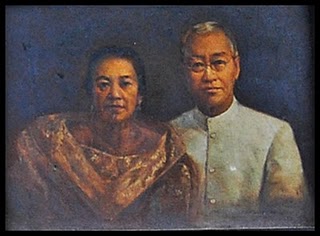(she died on May 1, 1947 at the age of 80)
Rizal had a Japanese girlfriend osei-san.
Howerver the romance wasn’t meant to be.
Heartbroken Rizal wrote the following about about o sei san.
Rizal had a Japanese girlfriend osei-san.
Howerver the romance wasn’t meant to be.
Heartbroken Rizal wrote the following about about o sei san.
Every student in the Philippines can name all or a few of the women of Rizal, but when pushed a bit further he will admit that he knows little about the person. These women only figure in our history because of their association with Rizal. Surely, they were not mere footnotes in the life of our national hero, but had lives of their own. What were they like before or after their relationship with Rizal? When and where were they born? What happened to them after Rizal’s execution? When and where did they die?
One of the tips passed by the late Esteban de Ocampo and E. Arsenio Manuel is to work in cemeteries in search of tombstones with dates of birth and death. Josephine Bracken was buried in Happy Valley Cemetery in Hong Kong, but nobody has been able to find her common grave or the record of her internment. When the threat of swine flu is lowered and the weather in Hong Kong becomes more agreeable.
British historian Jim Richardson has been combing census records, now available online, and he has found Gertrude “Tottie” Beckett in the 1911 census, then 42 years old and living with her parents in Southall and not in the townhouse in Chalcot Crescent where Rizal rented a room in the attic. Dr. Richardson has found the year of birth, 1869, and place of birth Ely, Cambridgeshire, but other details about her will require a dedicated and patient search in the census records.
Takefumi Terada showed us the Rizal bust in Hibiya Park, just across the Imperial Hotel, and Zoshigaya Reien (literally, Zoshigaya spirit garden/cemetery) on the outskirts of Tokyo’s commercial and business district to the grave of the woman all Filipinos know as “O-sei san.”
Rizal’s bust in Hibiya park was ornamented by bird droppings and O-sei san’s grave had weeds growing all over it, making us wonder what happened to her grandson, who was said in the 1950s to be a Japanese diplomat assigned in Switzerland. Maybe she had great-grandchildren, but do they visit her grave? Have they been told that her brief relationship with Rizal is one of the highlights of Philippine-Japan relations.
Terada-sensei came armed with a map of the Zoshigaya cemetery and a photocopy of an obscure newsletter that seems to be dedicated to people buried there. This newsletter had a long and detailed article on O-sei san, complete with pictures. Terada-sensei was kind enough to translate the material, and so far this is as far as we can go on O-sei san.
Her full name was Usui Seiko, her nickname was “O-sei” from Seiko. The Usui family came from Chiba near the present Narita Airport outside downtown Tokyo. Her father was a veteran samurai who turned to business and ran a trading store in Yokohama. Seiko’s older brother was killed in Ueno during the Shogitai revolt against the Meiji. To provide Seiko with a playmate, her parents adopted an orphan from Nagasaki named Yoshi.
Seiko had an upbringing that gave her fluency in English and a bit of French. She was described as shy yet she served as Rizal’s interpreter, and accompanied him on sightseeing trips around Japan. Being a woman of “high culture,” she introduced Rizal to Japanese culture teaching him to write Japanese characters and paint in the Japanese-style.
After Rizal, she married Alfred Charlton (b. 13 August 1859 Liverpool; d. 2 November 1915) who was an English teacher in the First High School, then the Yamaguchi High School in Imaguchi, and later taught chemistry in the prestigious Gakushuin High School. He was decorated with the Japanese Order of Merit, 5th class, indicated on his tombstone.
Charlton and Seiko had a daughter named Yuriko who married the son of a senator named Yoshiharu Takiguchi. They had a son (no name) who was a Japanese diplomat assigned in Geneva.
Seiko never told anyone about her friendship with Rizal, until the 1950s when Filipino researchers tracked down her stepsister Yoshi who said Seiko collected Philippine stamps and cherished those which had Rizal’s picture. Her stamp collection and any mementos left by Rizal were destroyed during the bombing of Tokyo in 1944.
After her home in Shinjuku was destroyed, Seiko moved to Hagi, west of Yamaguchi, where she died on May 1, 1947 at the age of 80.
Seiko’s grave has a large piece of stone that has the initials “A.C” on top. The Japanese text reads “Alfred Charlton, Order of Merit 5th class, and wife Seiko.” There is a small crooked tombstone beside that of Seiko and Alfred’s that marks the grave of Usui Yoshida who was interviewed by the Filipino historians and researchers in the 1950s.
This is where the trail ends. It isn’t much to go on, but it gives us a better idea of who she was, what she was like, and perhaps helps us understand what was in her that Rizal found attractive.




























